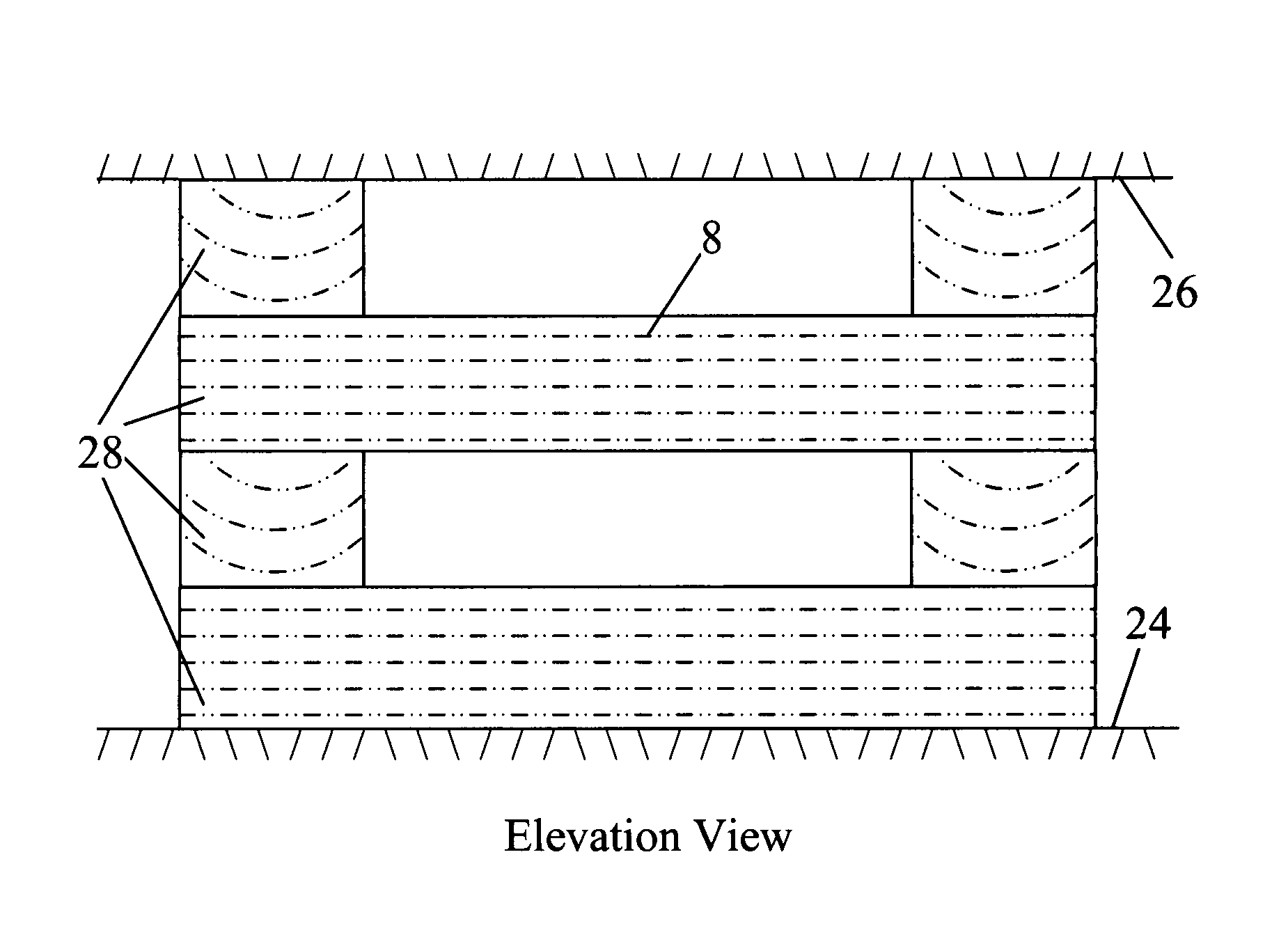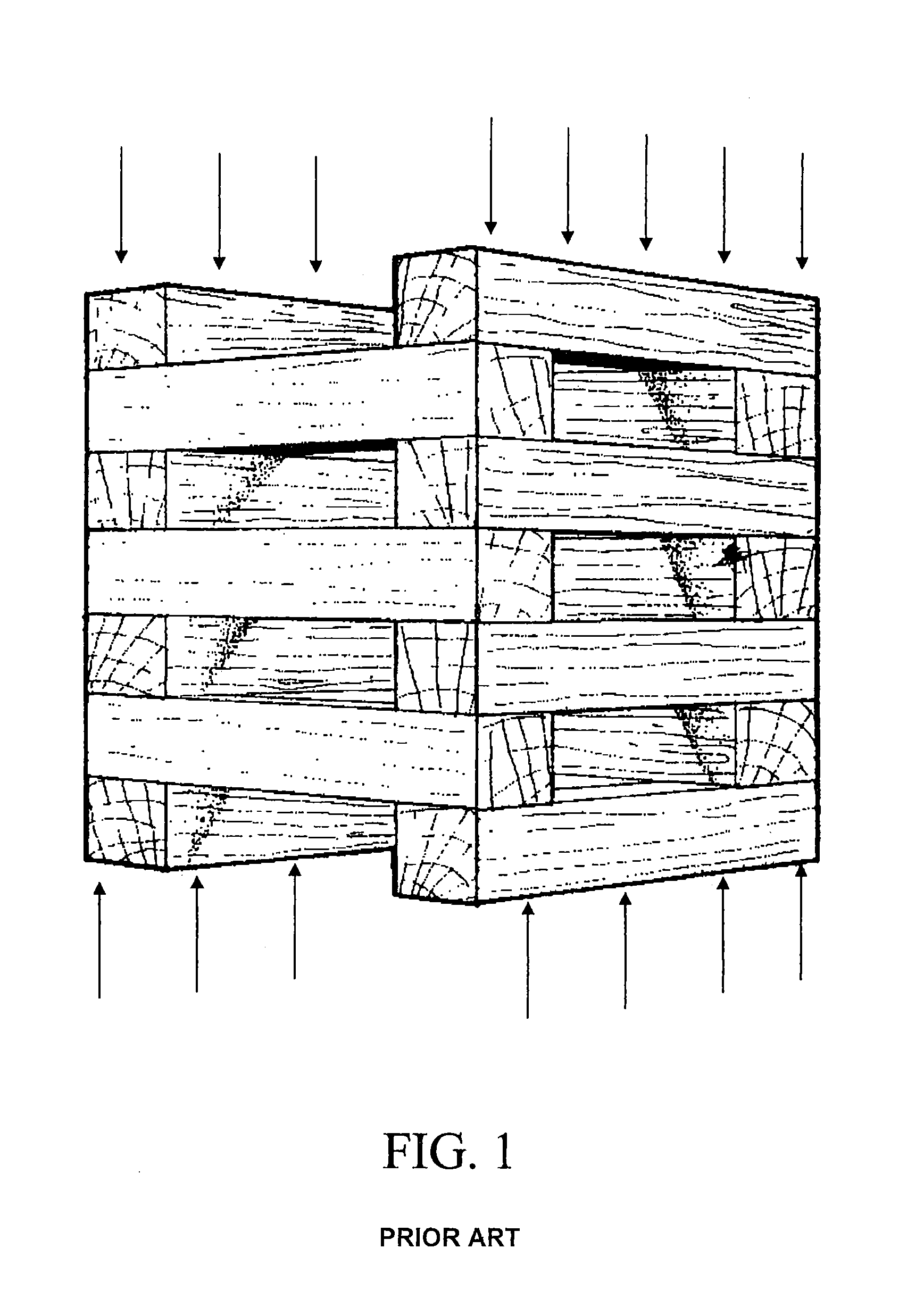Engineered composite wooden crib for use as a mine support
a composite, wooden crib technology, applied in the field of mining, can solve the problems of reducing the resistance of air flow through the crib, unable to allow large roof or floor rock movements, and significant deformation resistance, so as to achieve less wood, higher overall rigidity or rigidity, and less load
- Summary
- Abstract
- Description
- Claims
- Application Information
AI Technical Summary
Benefits of technology
Problems solved by technology
Method used
Image
Examples
Embodiment Construction
[0038]Referring to the drawings, the invention will be explained in further detail. In FIG. 1, a traditional solid wood element crib is shown. This figure shows a 7-layer crib in a 2 by 2 configuration, with each element parallel to the floor or roof surfaces, and with vertical force lines applied to the crib from the direction of the roof and floor. FIG. 7 shows an elevation view of a four-layer 2 by 2 crib using traditional solid wood elements 28, placed on the floor 24 and stacked up to the roof 26, and showing wood grain direction 8 in each element.
[0039]FIG. 2 shows a drawing of the loading direction in a solid wood element as is used in the typical crib element contained in the crib in FIG. 1. The force is applied to face 10 and is transverse to the grain direction 8 shown in FIG. 2. Face 12 shows the end grain of the block of wood. In this drawing, load is applied along axis y, and the grain runs along axis z. FIG. 11 shows a stress-strain graph of forces along the y axis in ...
PUM
 Login to View More
Login to View More Abstract
Description
Claims
Application Information
 Login to View More
Login to View More - R&D Engineer
- R&D Manager
- IP Professional
- Industry Leading Data Capabilities
- Powerful AI technology
- Patent DNA Extraction
Browse by: Latest US Patents, China's latest patents, Technical Efficacy Thesaurus, Application Domain, Technology Topic, Popular Technical Reports.
© 2024 PatSnap. All rights reserved.Legal|Privacy policy|Modern Slavery Act Transparency Statement|Sitemap|About US| Contact US: help@patsnap.com










